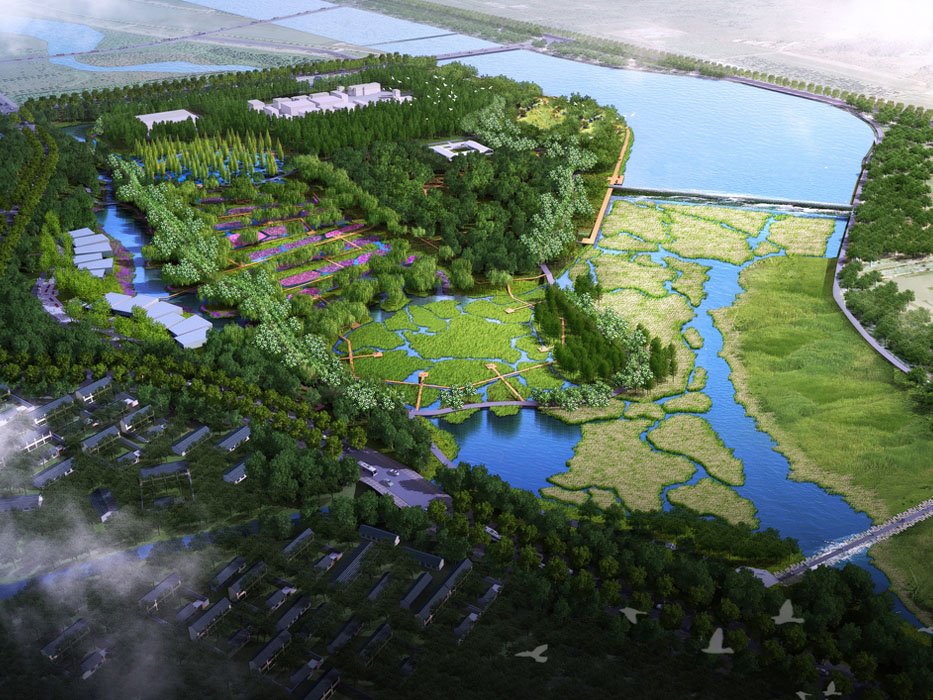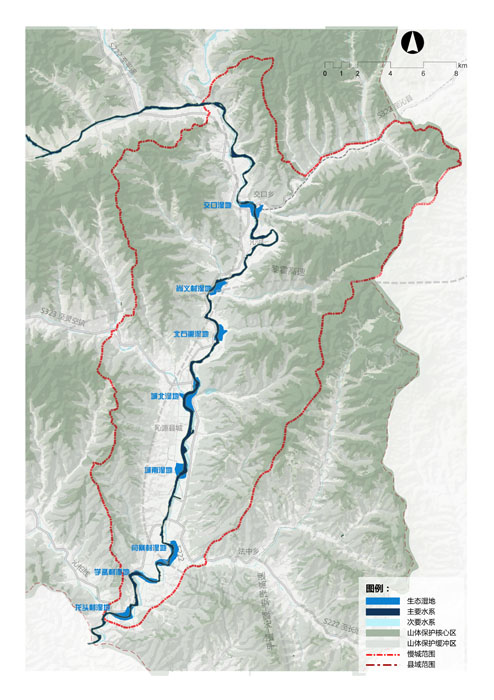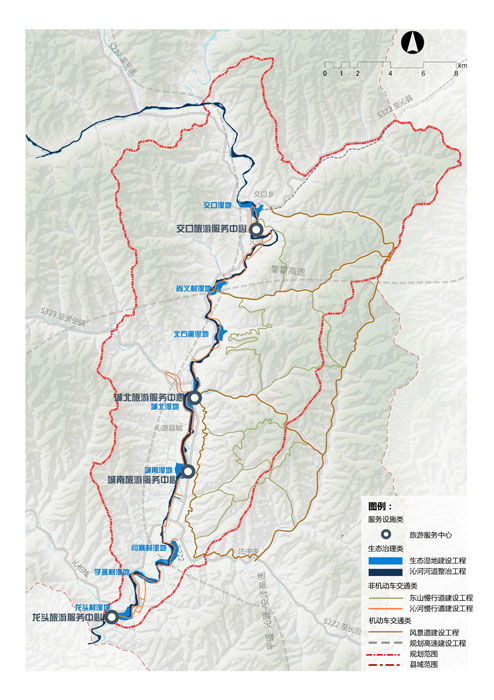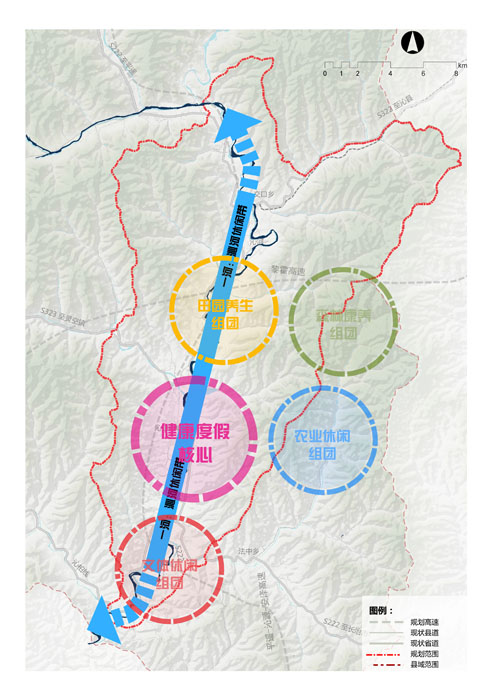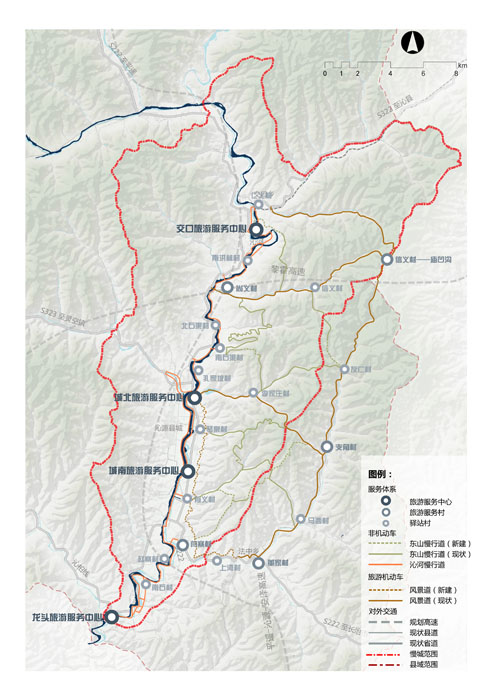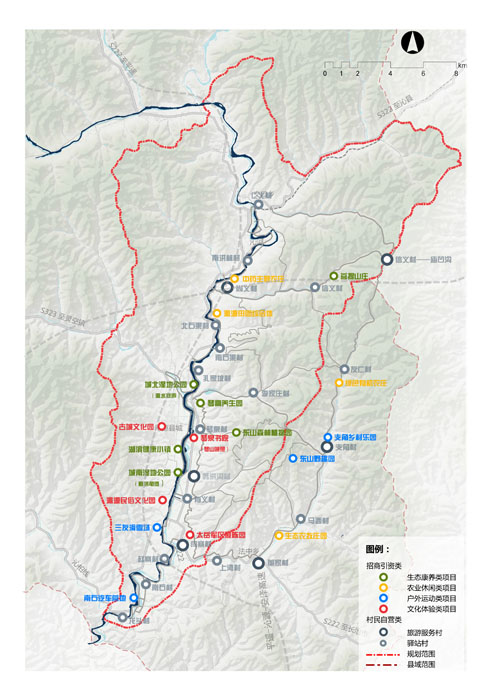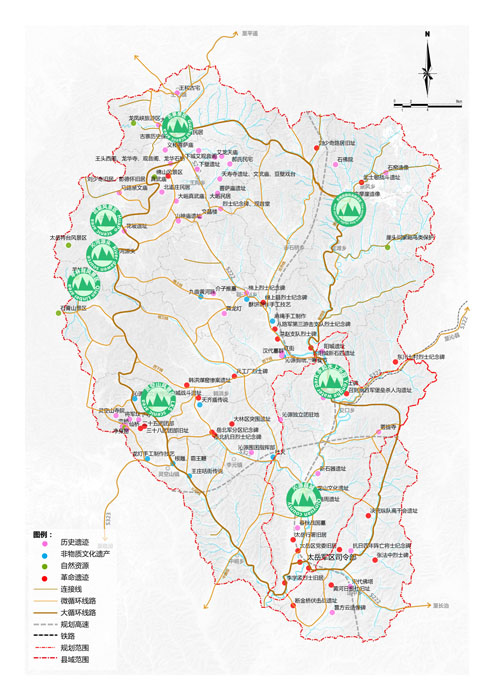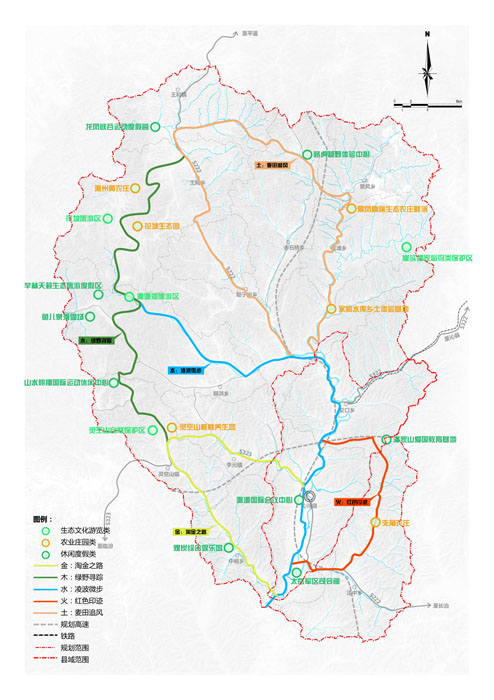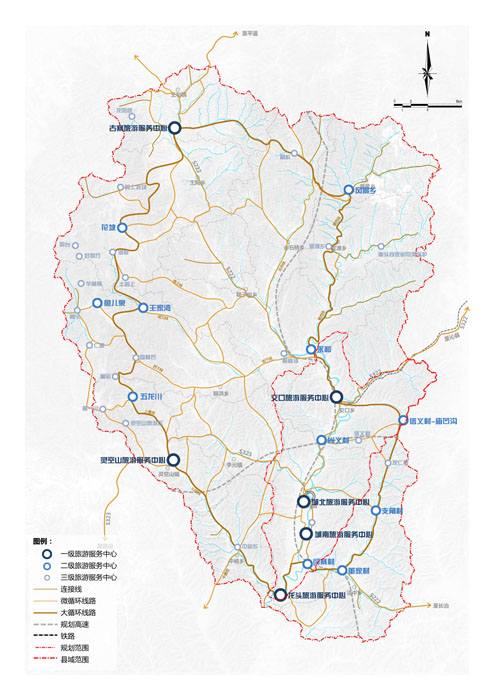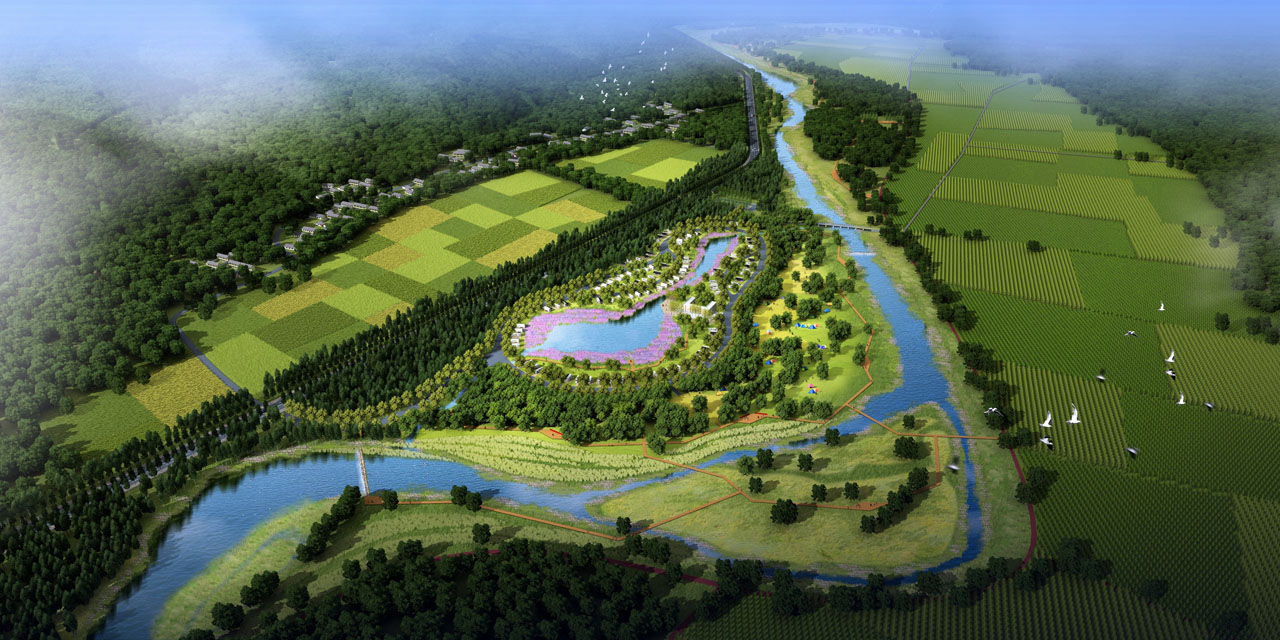Shanxi Changzhi Qinyuan County The International Slow City Planning
Project Information
- Project Location:
- China Qinyuan, Shanxi
- Project Scale:
- 200 Square Kilometers
- Design Time:
- June 2017
Project Profile
1. Project Statement
Qinyuan County is located at the eastern foot of Taiyue Mountain, adjacent to Huozhou City to the west, Pingyao County to the north, Qinxian County to the east, and Tunliu County to the south. It boasts the highest forest coverage rate in the province and was listed as one of the "Top 100 Best Breathing Cities" in 2017, also being an important production area for traditional Chinese medicinal herbs. This plan aims to transform Qinyuan into the "China's First Health International Slow City," integrating ecological vacations, health preservation, sports, and agricultural leisure.
2. Objective and Challenge
2.1 Issue and Challenge
Qinyuan is a provincial-level impoverished county, where the decline of the coal industry has led to sustained economic decline. The tourism industry, which holds promise, has not yet become a significant pillar supporting economic growth in Shanxi. Regarding regional transportation, there are only provincial roads and regional traffic is chaotic, with planned highways still under construction. In terms of regional tourism services, there are few mature scenic spots and high-quality tourism service facilities, lacking core attractiveness.
2.2 Objective
This plan will focus on three aspects: slow ecology, slow transportation, and slow tourism, aiming to develop Qinyuan into a "China's First Health International Slow City" integrating ecological vacations, health preservation, sports, and agricultural leisure.
3. Design Strategy
Through controlled development for ecological protection, optimizing current transportation, and integrating slow city concepts, Qinyuan will be developed into China's first health international slow city combining ecological vacations, health preservation, and leisure. The design strategies are mainly divided into three parts:
Slow Ecology: Protect and restore water, mountains, and fields resources in Qinyuan County.
Slow Transportation: Develop tourist motor vehicle traffic and non-motorized slow travel traffic system according to external traffic planning and village planning tourism service system.
Slow Tourism: Based on health experience, supported by fitness and health resorts, to create a core of health tourism products and build key projects to enhance the core attractiveness of villages.
4. Conclusion
In terms of slow ecology, the planning focuses on water, mountains, and fields. The water ecological system includes constructing vegetation buffer zones, protecting water systems and banks, constructing ecological wetlands, and restoring wetlands and riverbanks. The mountain forest ecological system includes identifying sensitive areas for soil erosion and visual sensitivity, and delineating two-level mountain protection zones. The farmland ecological system includes promoting environmentally friendly agriculture, optimizing agricultural ecological environment, and scaling up planting of landscape crops to create productive agricultural landscapes.
In terms of slow transportation, the plan is divided into two aspects: motor vehicle tourism traffic and non-motorized slow travel traffic system. The non-motorized slow travel traffic system consists of the "Qin River-East Mountain" slow travel tour system, along the Qin River bank from Jiaokou Township in the north to Longtou Village in the south. The entire system fully utilizes current village roads and field roads, separate from provincial roads, and connects smoothly with scenic routes.
Slow tourism planning includes a comprehensive layout of "one corridor, one ring, one core, and four clusters," integrating important tourist attractions throughout the region and connecting them through a 300-kilometer bicycle tourism route.
This plan will develop and construct government construction and non-government construction projects. Government construction projects include comprehensive management of the Qin River Basin, wetland construction, ecological engineering, and infrastructure projects such as tourism service centers, East Mountain Scenic Road construction, Qin River slow travel road construction, and East Mountain slow travel road construction. Non-government construction projects include tourism projects, investment attraction projects, and government-guided beautiful rural projects such as tourism service villages and relay station villages.
The plan also includes specific planning for three nodes: South New Town, South Wetland Park, and Nanshi RV Campground. South New Town, located in the southern part of Qinyuan County, aims to become the core of slow city tourism in the future. South Wetland Park, south of the county seat, aims to create a comprehensive ecological wetland park with functions such as leisure slow travel, popular science education, and ecological demonstrations. Nanshi RV Campground plans to create a popular car camping experience park.
In summary, combining the planning of slow ecology, slow transportation, and slow tourism at three levels, and the design principles of three main nodes, Qinyuan aims to create a healthy slow city that provides visitors with an ecological, free, and comfortable environment.
